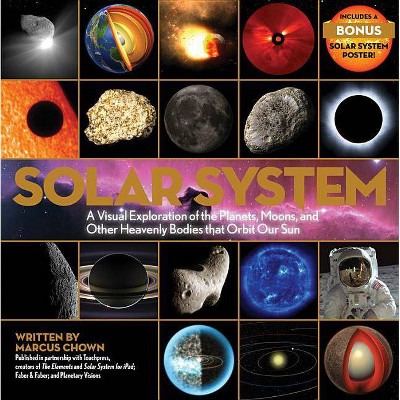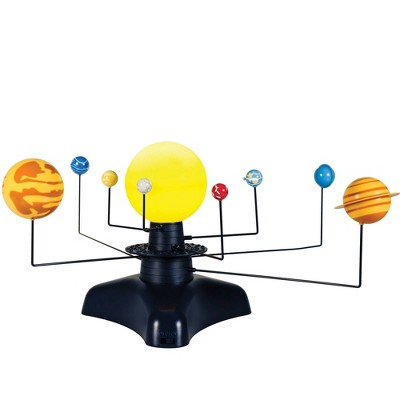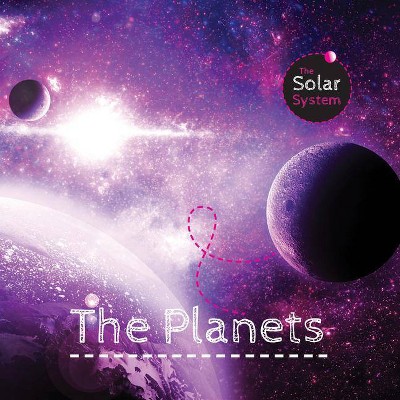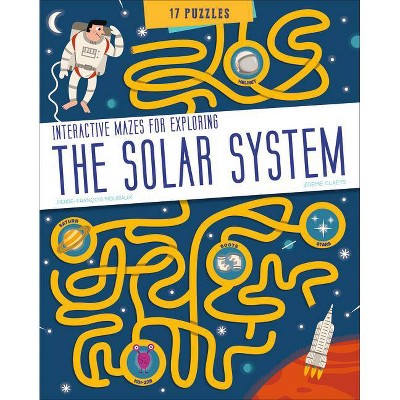Solar System Maps - by Nick Kanas (Paperback)
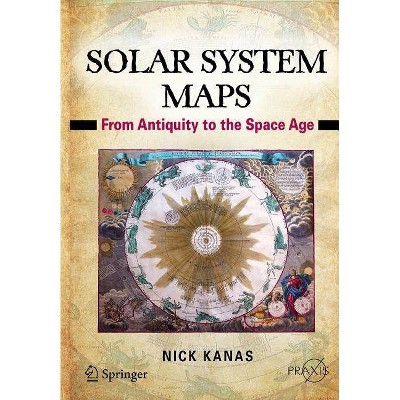
Similar Products
Products of same category from the store
AllProduct info
<p/><br></br><p><b> About the Book </b></p></br></br><p>This volume tells the fascinating story of Man's conceptualization of the solar system from the earliest times, when star maps represented what could be seen to the naked eye, to the modern age, when powerful telescopes and probes afford fresh insights.</p><p/><br></br><p><b> Book Synopsis </b></p></br></br>Introduction.- Ancient Models of the Universe/Solar System from several non-European cultures.- Earth-centered universe/Solar System model of the Classical Greeks through the Roman and Middle Ages.- Sun-centered universe/Solar System models in the pre-telescope era.- Sun-centered universe/Solar System in the early telescope era.- More powerful telescopes and associated advances leading to a separation of our solar system from the wider universe, as nebulae and galaxies were discovered.- How the Solar System has been more accurately perceived in the Space Age.<p/><br></br><p><b> From the Back Cover </b></p></br></br><p>In recent years, there has been increased interest in our Solar System. This has been prompted by the launching of giant orbiting telescopes and space probes, the discovery of new planetary moons and heavenly bodies that orbit the Sun, and the demotion of Pluto as a planet. In one generation, our place in the heavens has been challenged, but this is not unusual. Throughout history, there have been a number of such world views. Initially, Earth was seen as the center of the universe and surrounded by orbiting planets and stars. Then the Sun became the center of the cosmos. Finally, there was no center, just a vast array of galaxies with individual stars, some with their own retinue of planets. This allowed our Solar System to be differentiated from deep-sky objects, but it didn't lose its mystery as more and more remarkable bodies were discovered within its boundaries.</p><p>This book tells the exciting story of how we have conceptualized and mapped our Solar System from antiquity to modern times. In addition to the complete text, this story is made more vivid by: </p><p>- 162 Solar System and planetary maps, diagrams, and images (over a third in color);</p><p>- direct quotes and figures from antiquarian, contemporary, and Space Age documents and photographs that allow the reader to track how humans have viewed the Solar System from original sources;</p><p>- nine tables that compare the various world views, relative planetary positions, and components of the Solar System with each other.</p><p>Broad in scope and rich in imagery, this book will draw the reader into the story of our Solar System and how it has been mapped since the beginning of recorded time.</p><p> </p><p/><br></br><p><b> Review Quotes </b></p></br></br><br><p>From the book reviews: </p><p>"Each chapter is superbly illustrated with contemporary maps and photographs. ... The book is rounded off with comprehensive notes and references for each chapter and an excellent bibliography and glossary. ... It is just as comprehensive, well researched and expertly presented, with the keen eye of an astronomical historian with a thorough knowledge of his subject. ... could easily form the core of any modern library of astronomical literature devoted to its history." (Kevin J. Kilburn, The Journal of the British Astronomical Association, britastro.org, December, 2014)</p> <p>"This work is liberally illustrated, with many images taken from the private collection of amateur astronomer/star map specialist Kanas ... . The present book will be most useful to readers interested in an accessible survey of how world views developed in many cultures around the globe, sometimes in parallel and sometimes influenced by one another. ... Summing Up: Recommended. All academic and general readers." (S. P. Maran, Choice, Vol. 51 (8), April, 2014)</p><p>"Dr. Kanas has written an engaging, clear, readable book for laypeople with an interest in the history of solar system and our relationship to it. ... Dr. Kanas's book gives a good, solid well-researched introduction to the history of the solar system. He explains complex ideas clearly and summarizes the main concepts concisely to solidify one's understanding of the concepts." (Julie Sweetkind-Singer, California Map Society Newsletter, Issue 1, April, 2014)</p><br><p/><br></br><p><b> About the Author </b></p></br></br>Dr. Nick Kanas is an Emeritus Professor of Psychiatry at University of California, San Francisco. He has been collecting antiquarian star maps for over 30 years. He is a member of several map collector societies and has lectured on the history of celestial cartography at scientific and non-scientific meetings of organizations such as the Adler Planetarium, the Lick Observatory, and the Sydney (Australia) Observatory, and annual meetings of the International Conference on the History of Cartography, the Society for the History of Astronomy, the Flamsteed Astronomical Society in Greenwich, U.K. and the California Map Society. He has written articles on this subject for a number of journals and magazines including 'Sky & Telescope' and the 'Journal of the International Map Collector's Society.' <p/>Nick is a Fellow of the Royal Astronomical Society (London). The first edition of his title 'Star Maps' (Springer, 2007) was well-reviewed and went through two printings. He continues to write and lecture on antiquarian star maps for various groups, including professional conferences and meetings of amateur astronomers and map collectors.
Price History
Cheapest price in the interval: 54.99 on November 8, 2021
Most expensive price in the interval: 54.99 on December 20, 2021
Price Archive shows prices from various stores, lets you see history and find the cheapest. There is no actual sale on the website. For all support, inquiry and suggestion messages communication@pricearchive.us

